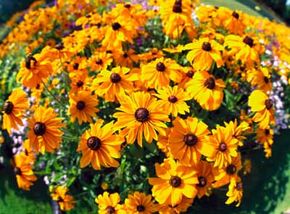Annuals are flowers that bloom the first year they are planted, often flowering just a couple of months after sowing. Most annuals are started indoors or in greenhouses in late winter or early spring.
Biennials like cup and saucer, some foxgloves, and some hollyhocks produce only greenery the first year. During the second year of growth, they flower and set seed destined to become the next generation. If you allow plants to self-sow for at least two years, you will have a steady supply of blooming plants.
Advertisement
Types of Annuals and Biennials
